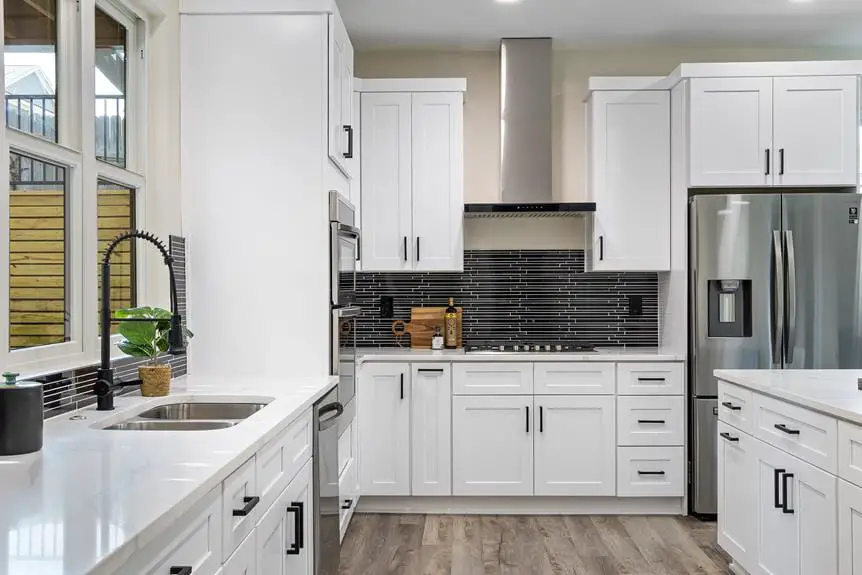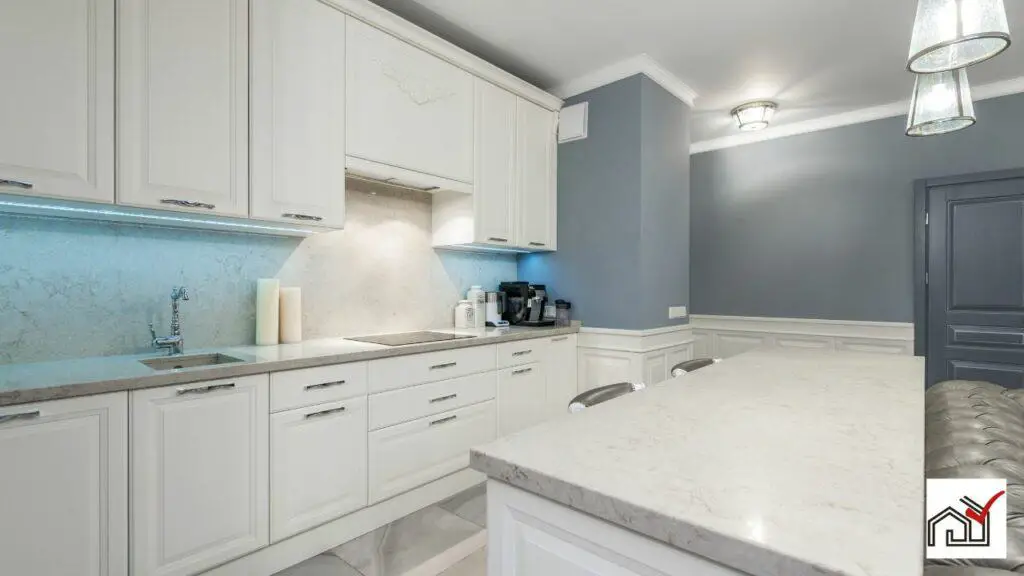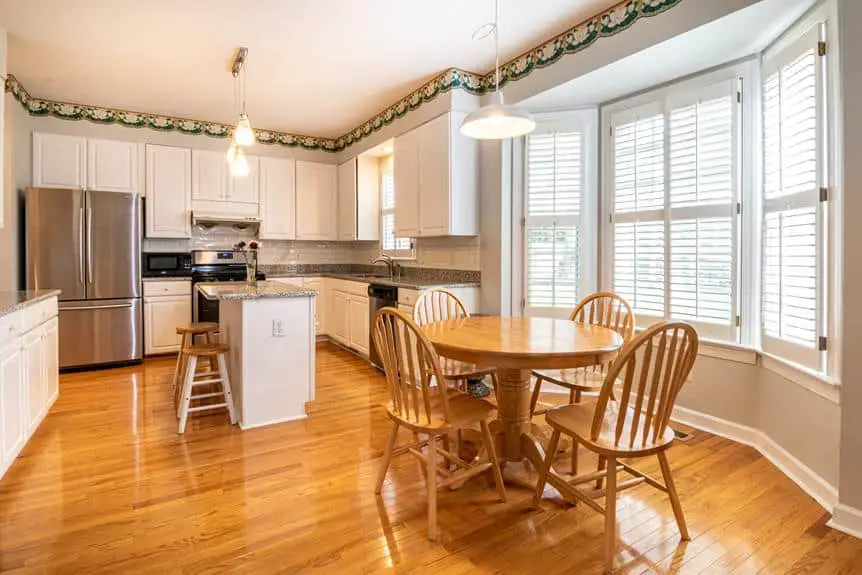If a kitchen sink doesn't drain and there's no visible clog, various factors could be responsible. Blocked venting systems might be disrupting the air pressure necessary for water flow.
Grease or fat buildup in the pipes, although not causing immediate clogs, can reduce drainage over time. Additionally, a malfunctioning P-trap or garbage disposal can hinder drainage.
Regular maintenance is important to address these issues and ensure the sink drains properly.
Common Misconceptions About Drains
A common misunderstanding is that a slow-draining kitchen sink is always due to a clog. However, slow drainage can also be caused by problems with plumbing vents or installation errors.
A plumbing system includes drain pipes, vent pipes, and fixtures, all of which must function correctly for water to flow properly and for the system to maintain the right air pressure.
Plumbing vents are critical for regulating air pressure within the pipes, which aids in water flow. If these vents are blocked or not installed correctly, they can disrupt air pressure, resulting in slow drainage or even stopping water from draining.
Additionally, if vent pipes are obstructed, they can create negative air pressure that slows down water flow, similar to what happens with a clogged drain. Therefore, it's important to check both the vents and the drain when dealing with drainage problems.
The Impact of Improper Venting
Improper venting in a plumbing system can cause slow drainage in a kitchen sink. A vent allows air into the system for smooth water flow. Without it, drainage can slow down due to a vacuum effect.
If plunging, hot water, or checking the garbage disposal doesn't fix slow drainage, blocked plumbing vents could be the issue. Blocked vents can also cause gurgling sounds and foul odors, as they disrupt the drain trap's water seal, allowing sewer gases into the home.
To prevent these problems, it's advisable to have plumbing professionals inspect and clean the vents to remove blockages such as leaves or nests. Regular vent maintenance is crucial for a functional plumbing system and to avoid persistent drainage issues.
Grease and Fat Accumulation
Grease and fat accumulation in kitchen sink drains can lead to reduced water flow. This problem often begins when small amounts of grease and fat stick to the pipes and combine with food particles and soap residue, eventually forming a thick layer that hinders water movement.
Pouring hot water down the sink may seem like a solution to dissolve grease, but as the water cools in the pipes, the grease can harden and cause blockages. These blockages can be difficult to clear without help from a professional.
To avoid grease buildup, it is best to dispose of fats and oils in the trash, not down the sink. Using a sink strainer to catch food scraps can also help prevent clogs. For existing grease accumulation, natural solutions like a mix of baking soda and vinegar can break down organic material without using harsh chemicals.
If these methods do not work, it may be necessary to contact a plumber. A professional can effectively remove the buildup, ensuring the sink drains properly and prolonging the life of the plumbing system.
Foreign Objects and Debris
Foreign objects and debris can cause blockages in kitchen sink drains even with regular maintenance. Items like utensils, jewelry, or small toys should not enter the sink because they can impede drainage. Large or fibrous food scraps can also clog the sink. These objects can attract and hold smaller food particles, worsening the clog and potentially leading to serious plumbing problems that might require professional repair.
To prevent blockages, it's important to monitor what is disposed of in the sink. Using a sink strainer can help catch food scraps. If the sink is still not draining, using a mixture of baking soda and vinegar can sometimes dissolve organic material that's stuck to the foreign objects, making them easier to remove.
Issues With the P-Trap
If foreign objects and debris are not causing the issue, the P-Trap might be responsible for drainage problems in your kitchen sink. The P-Trap is the curved pipe under the sink that can collect sediment, causing clogs and water to stand in the sink.
To fix a sink that won't drain, inspect the P-Trap. Clogs in this area can lead to backed-up water. While some might use a plumber's snake or a drain stopper, these tools may not always work for P-Trap clogs.
Cleaning the P-Trap can clear clogs, but it should be done carefully to avoid damaging the plumbing. It's usually best to hire a professional plumber who has the right tools and knowledge to clean the P-Trap without causing damage.
Garbage Disposal Malfunctions
A malfunctioning garbage disposal can cause a kitchen sink to drain slowly or not at all. This is often because the disposal is jammed with food or debris. To fix this, you can try pouring vinegar and hot water into the disposal to break down organic material, or use ice cubes to help clear the blockage with a scouring effect when the disposal is running. These solutions are useful for disposals with a buildup of deposits. Always run plenty of water when using the disposal to avoid clogs.
If these methods do not work, a drain snake can be used to remove the clog, but be careful not to damage the disposal's internals. If you're unsure or the problem remains, test the sink by adding a small amount of water to see if the blockage is in the disposal or further down the pipes. If the water still won't drain, call a professional plumber. They have the tools and knowledge to fix your garbage disposal and get your sink working properly again.
Tips for Preventative Maintenance
To maintain a clear kitchen sink, regularly practice preventative maintenance. This reduces the risk of blockages. Regular habits affect drainage health. Flush the drain with hot water after use to clear residue.
Use natural cleaners as a preventative measure. Combine a cup of baking soda with a cup of vinegar in the drain. This mixture breaks down build-up and eliminates odors. After a few minutes, flush with hot water.
Inspect the sink for holes or gaps that can affect water flow. Use a plunger occasionally to remove hidden blockages. Incorporate these tasks into your cleaning routine to avoid major problems and keep your sink functioning properly.
Regular maintenance prevents costly repairs.




